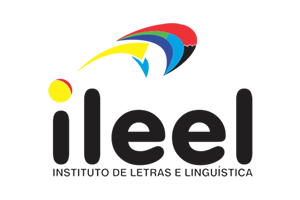Skopostheorie na sala de aula
Uma experiência multimodal mediada pela tecnologia dos aplicativos digitais
DOI:
https://doi.org/10.14393/LL63-v35n2-2019-4Palavras-chave:
Tradução interlinguística, Tradução intersemiótica, Skopostheorie, Gêneros textuais, Aplicativos digitaisResumo
Este artigo descreve uma atividade didática realizada em contexto formativo em nível superior na Universidade Federal do Pará, município de Bragança. A ambiência do estudo é a disciplina de Tradução e Interpretação em Língua Inglesa e os objetivos do estudo são apresentar os pressupostos da tradução funcional por meio do modelo proposto pela Skopostheory (VERMEER; REISS, 2013; NORD, 2006) e refletir sobre questões atinentes à tecnologia e a utilização de aplicativos digitais de design gráfico como suporte às transposições interlinguísticas e intersemióticas, viabilizando a elaboração de textos multimodais, criativos e de diferentes escopos. São revisitadas algumas concepções sobre competência tradutória, com ênfase na subcompetência instrumental (RISKU, 1998, 2010; WEINERT, 2001; HURTADO ALBIR, 2015; ALCINA 2008; EMT, 2009). Os resultados apontaram para a preferencia pelos aplicativos digitais Canva, Prezi, Flipsnack, Storyboard na elaboração de textos traduzidos em dupla direcionalidade e gêneros diversificados.
Downloads
Referências
BENCHIMOL-BARROS, S. H. Relações sistêmicas entre currículo de formação e subcompetências tradutórias: um estudo da realidade da Amazônia Legal. In: II SEDITRAD – 2º Seminário Internacional de Pedagogia e Didática da Tradução. UnB: Brasília (no prelo).
BIAU GIL, J. R.; PYM, A. Technology and translation (a pedagogical overview). In: PYM, A.; PEREKRESTENKO, A.; STARINK, B. Translation technology and its teaching. Tarragona, Espanha, 2006. Disponível em: http://isg.urv.es/publicity/isg/publications/technology_2006/index.htm. Acesso em: 12 set 2019.
DELEUZE, G.; GUATTARI, F. Mil Platôs: Capitalismo e esquizofrenia 2. Tradução de Aurélio Guerra Neto, Ana Lúcia de Oliveira, Lúcia Cláudia Leão e Suely Rolnik. São Paulo: Ed. 34. v.3,1996.
EMT. Competences for professional translators, experts in multilingual and multimedia communication, 2009. Disponível em: http://ec.europa.eu/dgs/translation/programmes/emt/key_documents/emt_compet ences_translators_en.pdf. Acesso em: 14 out 2019.
FERREIRA, R. S; GONÇALVES, M. L. Tradução intersemiótica e cibercultura: compartilhando leituras do clássico machadiano nas redes digitais. Ipotesi, Juiz de Fora, v. 18, n. 2, p. 165-177, 2014.
FRASER, J. The Translator Investigated. The Translator, v. 2, n. 1, p. 65-79, 1996.
HALLIDAY, M. A. K. Ideas about Language. In: HALLIDAY, M. A. K. Occasional Papers I. Sidney: Applied Linguistics Association of Australia, 1977. p. 32-55.
HURTADO ALBIR, A. The acquisition of translation competence. competences, tasks, and assessment in translator training. Meta, v. 60, n. 2, p. 256-280, 2015.
HURTADO ALBIR, A. Traducción y traductología: introducción a la traductología. Madrid: Ediciones Cátedra, 2013.
JAKOBSON, R. Linguística e Comunicação. Cultrix e USP: São Paulo, 1969.
KRESS, G.; VAN LEEUWEN, T. Multimodal discourse: modes and media of contemporary communication. Amsterdam: Hodder Education, 2001, p.137.
KIRALY, D. Towards a view of translator competence as an emergent phenomenon: Thinking outside the box (es) in translator education. In: KIRALY, D., HANSENSCHIRRA, S.; MAKSYMSKI, K. (Ed.). New prospects and perspectives for educating language mediators. Tübingen: Gunter Narr, 2013, p. 197-224.
LEFEVERE, A. Translation, rewriting and the manipulation of literary fame. London, New York: Routledge, 1992.
LÈVY, P. Cibercultura. Rio de Janeiro: Editora 34, 1999.
MUNDAY, J. Introducing translation studies: theories and applications. 4. ed. London/New York: Routledge, 2016.
RISKU, H. A cognitive scientific view on technical communication and translation: do embodiment and situatedness really make a difference? Target, v. 22, n. 1, p. 94-111, 2010.
NORD, C. Translating as a purposeful activity: a prospective approach. TEFLIN Journal, v. 17, n. 2, p. 131-143, 2006.
PEGRUM, M. The mobile landscape, In: PEGRUM, M. Mobile learning: languages, literacy and cultures. England: Macmillan, 2014, p 1-23.
REISS, K.; VERMEER H. J. Towards a general theory of translational action: Skopos theory explained. Translated by C. NORD. Manchester: St Jerome Publishing, 2013.
ROBERTS, H. E.; YATES, W. The Altair 8800 – The Most Powerful Minicomputer project ever presented. Popular Electronics, p. 33-38, jan. 1975.
SCHJOLDAGER, A., CHRISTENSEN, T. P., FLANAGAN, M. Mapping translation technology research in translation studies: An introduction to the thematic section. Hermes-Journal of Language and Communication, v. 56, p. 7-20, 2017.
SNELL-HORNBY, M. The turns of translation studies. Amsterdam/Philadelphia: John Benjamins, 1995.
STUPIELLO, E.N.A. (Org.). Tradução & perspectivas teóricas e práticas. 1. ed. São Paulo: Unesp, 2015, v. 1, p. 303-324.
VENUTI, L. (Ed.). Introduction. In: VENUTI, L. The translation studies reader. New York: Routledge, 2004, p. 1-18.
VERMEER, H. J. Skopos and commission in translational action. Translated by Andrew Chesterman. In: VENUTI, L. (Ed.). The translation studies reader. New York: Routledge: 2004, p. 221-232.
Publicado
Edição
Seção
Licença
Autores que publicam nesta revista concordam com os seguintes termos:
Autores mantêm os direitos autorais e concedem à revista o direito de primeira publicação, com o trabalho simultaneamente licenciado sob a Creative Commons Attribution License que permitindo o compartilhamento do trabalho com reconhecimento da autoria do trabalho e publicação inicial nesta revista.
Autores têm autorização para assumir contratos adicionais separadamente, para distribuição não-exclusiva da versão do trabalho publicada nesta revista (ex.: publicar em repositório institucional ou como capítulo de livro), com reconhecimento de autoria e publicação inicial nesta revista.










